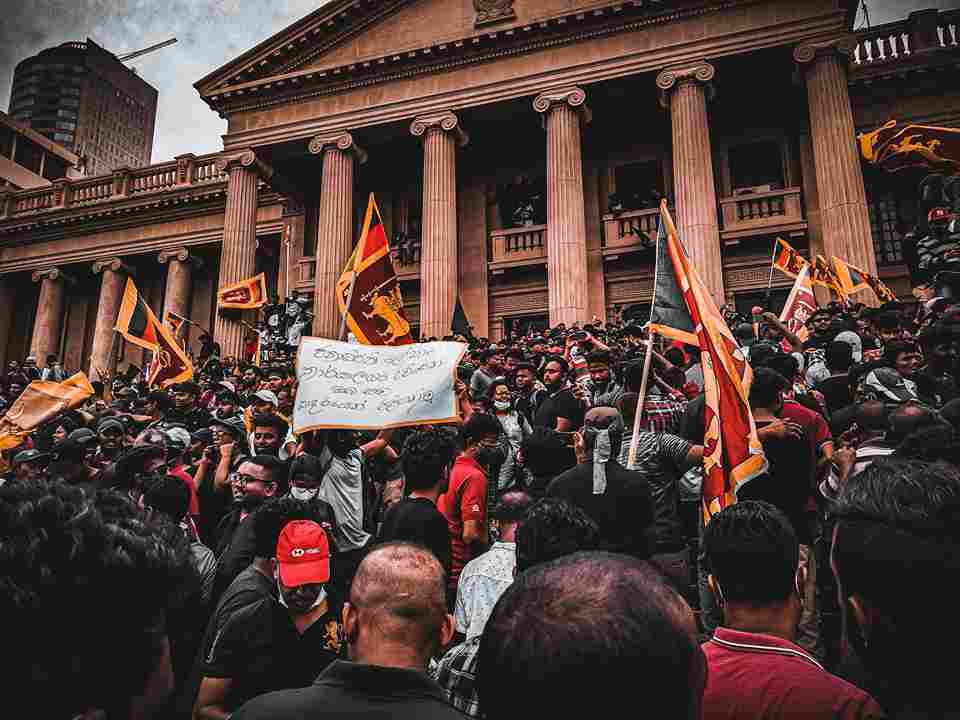The Sri Lanka economic crisis has been ongoing for over a year now. It has now become the worst Sri Lanka economic crisis since the country was formed in 1948. What are the main causes of this crisis? Politics, Debt, Reserves, Taxes, and Reserves are some of the factors that contribute to the situation. If any of these factors are causing this Sri Lanka economic crisis, then what is the best solution to the crisis?
Attract Traditional Investors to Sri Lanka
The Rajapaksa regime was unable to attract traditional investors to Sri Lanka. Instead, they turned to Chinese soft loans to develop infrastructure and boost tourism. The result was a rapid development compared to slow Western investment. This policy harmed the economy but was essential to ensure the family’s profit. The question then becomes: what can the Rajapaksa regime do to attract more foreign investment?
The current government is not responding well to the recent Sri Lanka economic crisis. The government has been dealing with a slew of economic problems that have exacerbated the Sri Lanka economic crisis. The current government is trying to restore order and begin talks with creditors and the International Monetary Fund. However, the Sri Lanka economic crisis has been accompanied by months of protests and antigovernment demonstrations. Even though the president resigned on July 14, daily life remains a struggle.
The Collapse of Tourism
The deteriorating economy has been blamed on several factors, including the collapse of tourism, draining of foreign reserves, and the Ukraine conflict. The country’s citizens were already angry with the government, which banned chemical fertilisers, decimating the staple rice crop and driving up rice prices. In response to the Sri Lanka economic crisis, the government enlisted the support of India and China, while opening talks with the IMF. However, the current political turmoil forced the president of the country to resign – an unprecedented move in post-independence history. Prime Minister Wickremesinghe subsequently took over as acting president and fled the country.
The Sri Lankan economy has been struggling since a coronavirus pandemic decimated tourism earnings. Adding to the Sri Lanka economic crisis was a sharp rise in foreign currency borrowing and high inflation. In addition to this, Sri Lanka had accumulated a significant amount of debt from infrastructure spending and sweeping tax cuts. In addition, the island nation suddenly banned the use of chemical fertilizers, which led to disastrous crop yields. In response to this, Sri Lanka’s government began borrowing through international sovereign bonds, a practice which eventually aggravated its debt burden.
It Needs USD 1.5 Billion
The government estimates that it needs USD 1.5 billion to get out of this Sri Lanka economic crisis and resume imports of essential goods. The IMF bailout will also require Sri Lanka to reduce its populist tax regime and increase government revenue through improved tax collection. This deal will lay the foundation for Sri Lanka’s future. But, it will take time for the government to implement the bailout measures. In the meantime, the country needs to start making hard choices and get a grip on its debt problems.
The political instability in Sri Lanka raises questions about discussions with the International Monetary Fund. Former Finance Minister Ali Sabry told parliament that it could take six months to get an IMF program up and running. The country could take as long as two years to recover from this Sri Lanka economic crisis. The Rajapaksa government is also reluctant to seek IMF help for fear that it could mean imposing unpopular austerity measures. To overcome this problem, the government is relying on help from India.
Current Fiscal Malaise in Sri Lanka
The current fiscal malaise in Sri Lanka may be due to the government’s decision to implement tax cuts last year. Prior to the tax cuts, Sri Lanka had enjoyed its first primary budget surplus in years and was on track to reclaim upper-middle-income status. The tax cuts, however, increased fiscal deficits and alienated international financial markets. A downgrade in Sri Lanka’s credit rating followed the tax cuts and further undermined the country’s economy.
The current government is contemplating a series of measures to combat the tax-hike situation in Sri Lanka. Among the proposed measures is the repeal of tax exemptions for corporations and broadening the tax base to include the unincorporated sector. However, these measures would only further compound the country’s problems, as only a small percentage of the population pays income tax. The government’s goal is to eliminate all tax exemptions and to reduce the fiscal deficit by at least 7% in 2020.
Debt has Grown Steadily
The Sri Lankan government has been under a lot of pressure in recent months. The country has a staggering $50 billion in debt to international creditors and little means to repay the debt. The debt has grown steadily in recent years as the previous government borrowed large amounts to build infrastructure. Meanwhile, falling tax revenues have been a long-standing issue in the country. However, the new government is determined to fight the growing debt burden by ensuring a smooth repayment process.
With a total debt of more than $7 billion due this year, the government of Sri Lanka has been under pressure to draw down its reserves to meet these obligations. As of March, the country had approximately $2 billion in reserves. By July, the country had only $5.7 billion in reserves, leaving the country with little room to negotiate with lenders. As a result, the rupee has depreciated by nearly eight percent this year, and imports have become more expensive.
The Country has Halted Payments on Foreign Loans
The economy of Sri Lanka has been in such a deep crisis that the country has halted payments on foreign loans. The country owes more than $50 billion in foreign loans, with at least $8.6 billion due this year alone. As a result, the country’s foreign exchange reserves have plunged to below $50 million. It would take another six months for the IMF to agree to help the country, which means that the country will continue to face economic hardships for at least two more years.
The Sri Lanka economic crisis has erupted into violence on Thursday as hundreds of protesters clashed with police. A severe shortage of foreign currency has made it difficult for the government to pay for essential imports and has led to power cuts. Meanwhile, soaring inflation and shortages have impacted ordinary Sri Lankans. To make matters worse, the government devalued its currency last month ahead of negotiations with the International Monetary Fund.
China’s Loans to Sri Lanka
The central government of Sri Lanka owes China nearly $3.5 billion, a figure that is rising to more than $4 billion by the end of next year. The loans are based on the principle of win-win results and consensus. Moreover, they are aimed at the entire nation and are thus regarded as beneficial to both countries. In 2016, China’s loans to Sri Lanka were responsible for funding a variety of projects, from the Southern Expressway to utilities and roads. They have also financed vanity convention centres and telecom towers.
In response to the accusations, the Chinese embassy in the United Kingdom denied the claim, saying that the two countries have “good” relations and a win-win policy. However, some politicians and analysts in South Asia have claimed that China has inflated the costs of some of its projects in the country. According to official figures, China has completed over US$ 15 billion in infrastructure projects in Sri Lanka, but many say the interest rates are too high.
As a result, China is now struggling to meet the country’s payments, which are two-thirds of its revenue. Furthermore, the country is facing insufficient foreign-currency reserves, limiting its ability to invest in infrastructure projects. In the face of such hardships, the Sri Lankan government has appealed to Chinese Foreign Minister Wang Yi, and asked for concessionary trade terms and the lifting of Covid restrictions for Chinese tourists. Meanwhile, critics have also questioned the wisdom of Chinese loans to the country, which include $13 billion for a seafront business hub in Colombo and an airport and port in Hambantota.
The Country’s Long Civil War
The Sri Lankan economy is reeling under the effects of the global financial crisis and the country’s long civil war. The government drained its foreign reserves in 2009, and requested US $1.5 billion from the International Monetary Fund in 2016. The Sri Lankan economy was already in a precarious situation when the government introduced tax cuts in December of 2018. The fiscal deficit is now over 12 percent of GDP. In addition, Sri Lanka is struggling to meet its debt obligations, and its foreign debts are spiraling out of control.
The country owes more than $50 billion to international creditors, and with little money left over, it is having a difficult time repaying the debt. The Sri Lankan government had been struggling to make ends meet, so in 2019, it introduced the largest tax cuts in its history to bring the country’s economy back on track. Tax cuts, however, were not enough to cover the budget deficit, and the government was forced to rely on the Central Bank to meet its obligations.
Needs to Boost its Forex Reserves
The government needs to boost its forex reserves and increase efficiency of spending. It should allow markets to determine the price of fuel, and remove import restrictions. The government should liberalise trade and eliminate import restrictions, and encourage investment through coherent policy. The government has asked the Central Bank of Sri Lanka to conduct stress tests to identify vulnerabilities in the economy. The central bank is also investigating the state of the country’s debt and identifying measures that can be taken to improve the situation.
Privatization of State-Owned Enterprises
The government’s current approach to the problem of state-owned enterprises (SOEs) in Sri Lanka economic crisis is ineffective. It spends more on its own employees than on the businesses they regulate. Yet, this policy is unlikely to produce positive results in the long run. The government’s continued reliance on SOEs is detrimental to Sri Lanka’s economic trajectory and the future of the country.
Government-owned SOEs in the country have no incentive to innovate and are protected from bankruptcy. In Sri Lanka, the Ceylon Electricity Board, for example, borrowed money from the Ceylon Petroleum Corporation and two state-owned banks. These unprofitable structures make it difficult for SOEs to access private capital. The government is therefore forced to support them with taxpayer money. Private firms, however, are able to compete on a level playing field, and have greater flexibility.
Final Thought:
Another example of the failure of privatisation in Sri Lanka economic crisis is the loss-making SriLankan Airlines. The airline suffered enormous losses after Mahinda Rajapaksa removed Emirates as managing shareholder. Privatizing Sri Lankan Airlines was the only way to save the airline. It was then that the government realized it had to privatise state-owned enterprises to make them more competitive and profitable.






More Stories
Rob Leathern DecemberPaulReuters Joins Google As Vice President of Consumer Privacy
Rob Facebook DecemberPaulReuters is Leaving the Company
The SQM Club & Its Interesting Facts 2022